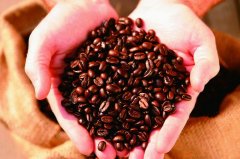Methods and skills of manual selection of coffee beans and defective coffee beans

I agree that apples don't taste different because of their size, but I disagree with coffee roasting when it says,"It doesn't matter if the beans are different sizes, they're all heated anyway." Coffee beans harvested from the same tree, regardless of particle size, maturity or immaturity, if all put into the same pot to roast, will produce uneven roasting of the finished product.
Thick beans are baked together with thin beans. Thick beans have poor heat transmission and the center (the part of the beans where water has not been removed) will occur in the "core" state that cannot be baked. Spaghetti is cooked until it has a "core" in order to have a moderate taste; but the "core" state is allowed only in the world of pasta, not in the world of coffee.
The "cored" coffee cannot be seen on the outside, only the beautiful surface of the roasted beans can be seen, but it is clear when it is cut open. The beans are divided into baked and unbaked parts. The coffee extract from cored coffee will have a strong taste that will choke your throat.
Anyway, when choosing green coffee beans, the beans with uniform shape, thickness, size, color, center line extension, etc. are the best. In short, an average bean is a good bean. Unfortunately, such beans are extremely rare.
I am often asked: "Big beans and small beans, which taste better?"
I replied,"The place of manufacture values large coffee beans highly based on their size." It is also said that the grading of the sieve size (coffee bean size) has nothing to do with French taste. The Nordic countries, which are now coffee advanced countries, purchase the most advanced coffee beans from Brazil and other places, mainly buying small particles of beans with sieve size 13-16. They avoid buying expensive, larger beans in favor of cheaper, smaller ones, perhaps because they value quality over reputation.
But strictly speaking, large coffee beans have better flavor. The actual size of the beans harvested from the same coffee tree baking extraction, cup test can be compared to the taste of the difference. Beans that are bigger and grow smoothly taste better.
When it comes to large-grain coffee beans, there are often high-quality beans twice as large as ordinary beans, such as marago gipe (large-grain beans above No.19 sieve, also known as elephant beans), which will cause uneven roasting, so it is recommended to pick them out by hand in advance: this is not to pick out defective beans, but to gather large-grain beans together and roast them separately.
In baking, consistency in bean size is more important than size and taste. Beans of different sizes should be kept separate and should not be baked together. Otherwise, it will inevitably lead to uneven baking results.
Similarly, the color of the beans should be consistent. The color of raw beans is cyan, brown and other colors. The color of beans indicates the water content, so the color of beans is consistent and easier to bake. Generally speaking, cyan and green represent more moisture, while brown and almost white represent less moisture.
Then there is the shape of beans, to choose the meat thickness is better. Even if the beans are large in grain size, thin ones tend to taste thin. rich and rich in flavor and depth, usually only the fleshy coffee beans produced in the highlands. Kenya, Colombia, Tanzania and other Arabica seed washed coffee beans are classified as "Colombia fresh bright coffee" by the New York market; the meat is thick and the moisture content is high, so it is difficult to transfer heat in the center during roasting, but through excessive roasting, it can lead to rich and varied flavors.
The last thing to mention is the central line (the longitudinal groove in the center of the coffee bean). Beans with a clear and well-defined center line are good quality. In addition, the silver skin covering its surface is preferably silver as shown in the literal. Silver skin appears tea brown, in addition to good management of natural drying method beans, mostly defective products.
What is Hand Selection?
Hand selection: It is a step to remove impurities and bad beans attached to delicious coffee beans. Coffee beans are often mixed with foreign matter, such as stones, wood chips, metal pieces, soil particles, tree fruits, etc., and sometimes coins and glass pieces.
At coffee production sites, specific gravity bean sorters (which use wind to classify beans according to particle size and weight) or electronic bean sorters (which remove defective beans according to color) are used to prevent impurities and defective beans from mixing, but it is natural to prevent them, and it is still necessary to rely on human hands to select them.
Unripe beans, in particular, are difficult to remove by machine and must be removed by hand. And these unripe beans can have a very bad effect on the taste of coffee. In addition to immature beans, defective beans also include dead beans, moth-eaten beans, black beans, moldy beans, shell beans, fermented beans, cracked beans, shelled beans, cocoa and so on.
Hand selection is done once during the green bean phase and again after baking, meaning that it is done once before and after baking. The proportion of defective beans is surprisingly high, good coffee beans generally contain about 20%, and low purity mocha is even higher than 40%. That is to say, after roasting, only about sixty or seventy percent of the coffee beans can be used. In other words, there will be thirty to forty grams of failed products in 100 grams of raw beans, which is quite wasteful. To reduce roasting failure, you must buy high-quality coffee beans as much as possible; if you are still afraid of roasting failure, you must not be lazy in removing defective beans. Defective beans are the bane of coffee taste.
When harvesting ripe, reddened coffee fruits by hand, the percentage of defective beans mixed in should be much lower, but in fact, green immature fruits are also picked at harvest time. Sometimes, in order to pursue harvesting efficiency, even branches are broken down. The washing type coffee because the refining process must be washed many times, so it is difficult to mix stones, glass pieces and other impurities, but if the non-washing type of natural drying method coffee, the degree of impurity mixing is quite high.
Roasting coffee mixed with too many defective beans, coffee products will appear color mottled situation. Compared to normal beans, defective beans oxidize abnormally fast and appear white after baking. Cheap coffee beans are often sold in supermarkets or coffee shops. When you open those packages, you can find that there are quite a lot of beans mixed in. This is the result of omitting the manual selection step and roasting directly.
The quickest way to understand the importance of the hand-picked step is to cup the coffee extract roasted with defective beans. After drinking it, you'll notice that your tongue stays numb for hours. Therefore, hand selection is an indispensable step in making delicious coffee. I think it is a pity that people tend to dismiss hand selection as monotonous, boring and meaningless. But I want you to understand that the flavor damage caused by defective beans cannot be hidden by any good baking technique. For baking to proceed smoothly, it is important to select the steps manually beforehand.
Next, I will introduce you to several kinds of defective beans.
Mildewed beans: because the drying is not complete, or in the transportation, storage process damp, and grow cyan, white mold, sometimes make beans stick together, if not remove these moldy beans, will produce mildew smell.
Dead beans: beans that bear abnormal fruit. The color is not easily changed by baking, so it is easy to distinguish. Flavor thin, and silver skin is equally harmful and useless, will become the source of odor.
Green beans: beans that are picked before they are ripe and have a fishy, revolting taste. Leaving green coffee beans for years is a strategy to deal with these immature beans
Shell bean: produced by poor drying or abnormal mating; the bean is broken from the center line and turned inside out like a shell. Shell beans will cause uneven baking and are prone to fire when baked deeply.
Worm-eaten beans: Moths invade and lay eggs when coffee fruits mature and turn red. Larvae nibble coffee fruits to grow, leaving worm-eaten traces on the surface of beans. Worm-eaten beans can cause cloudy coffee and sometimes produce a strange smell.
Black beans: beans that mature early and fall to the ground for a long time, and ferment and blacken in contact with the ground. It can be easily removed by manual selection. Coffee brewed with black beans will have a rotten smell and turbidity.
Overdried beans (cacao): natural drying method so that the pulp residue, not fully shelled is its cause. With iodine smell, earthy taste, etc., will give off a bad smell.
With shell beans: endocarp covered in coffee bean pulp inside, more residue in the washed coffee beans, baking heat permeability is poor, sometimes will catch fire burning, is the cause of coffee astringency. Other cracked beans, red beans (beans that encounter rain in the process of natural drying, taste dull and monotonous), stunted beans (small particles of beans that stop growing due to insufficient nutrients, taste strong), etc., sometimes mixed with corn or pepper grains, etc.
Stone: Harvested beans are easy to mix with stones or sawdust because of natural drying method.
Manual selection order:
1. Take the right amount of raw beans and put them in a tray
2. Select the green beans until they are flawless
3. Instead of staring at one side of the bean, pick it up and see its color and shape. Not letting go of any of them, his eyes moved from right to left.
4. Repeat the same steps over and over again.
5. Find out the average number of defective beans picked.
Important Notice :
前街咖啡 FrontStreet Coffee has moved to new addredd:
FrontStreet Coffee Address: 315,Donghua East Road,GuangZhou
Tel:020 38364473
- Prev

How to judge whether the raw coffee beans are fresh from the appearance? Judgment on the appearance of coffee beans
From the fruit state of coffee beans when they are picked from the tree to the state of raw beans that can be baked, the moisture content of coffee beans will be controlled between 9% and 13%, and it is not easy to bake if the water content is too high or too low. Generally, we get newly collected raw beans with water washing treatment, the moisture content is usually about 11.5% to 12.5%, half-washed Mantenin may reach 13%, and half-washed Brazil is 11% ~ 12% per day.
- Next

Analysis of the processing steps of coffee beans how to determine the baking degree of coffee beans?
1. Peeling removes the peel and most of the flesh by mechanical or manual means. two。 Fermentation removes the mucus and film from the core by fermentation. as the length of fermentation time will affect the flavor of coffee, each manufacturer has its own fermentation time. 3. The drying method is mainly divided into natural sun drying and natural air drying. Excessive water content can easily lead to mildew and insect growth of raw coffee beans.
Related
- Guji coffee producing area of Guji, Ethiopia: Humbela, Shakiso, Wulaga
- What is the most expensive variety of Qiloso in BOP multi-variety group?
- How to store the coffee beans bought home?
- Why are Yemeni coffee beans so rare now?
- Ethiopian Sidamo all Red Fruit Sun Sun Santa Vini Coffee beans
- SOE is mostly sour? What does it mean? Is it a single bean? what's the difference between it and Italian blending?
- Is Italian coffee beans suitable for making hand-brewed coffee?
- How to choose coffee beans when making cold coffee? What kind of coffee beans are suitable for making cold coffee?
- Just entered the pit to make coffee, what kind of coffee beans should be chosen?
- Can only Japan buy real Blue Mountain Coffee? What are authentic Jamaican Blue Mountain coffee beans?

